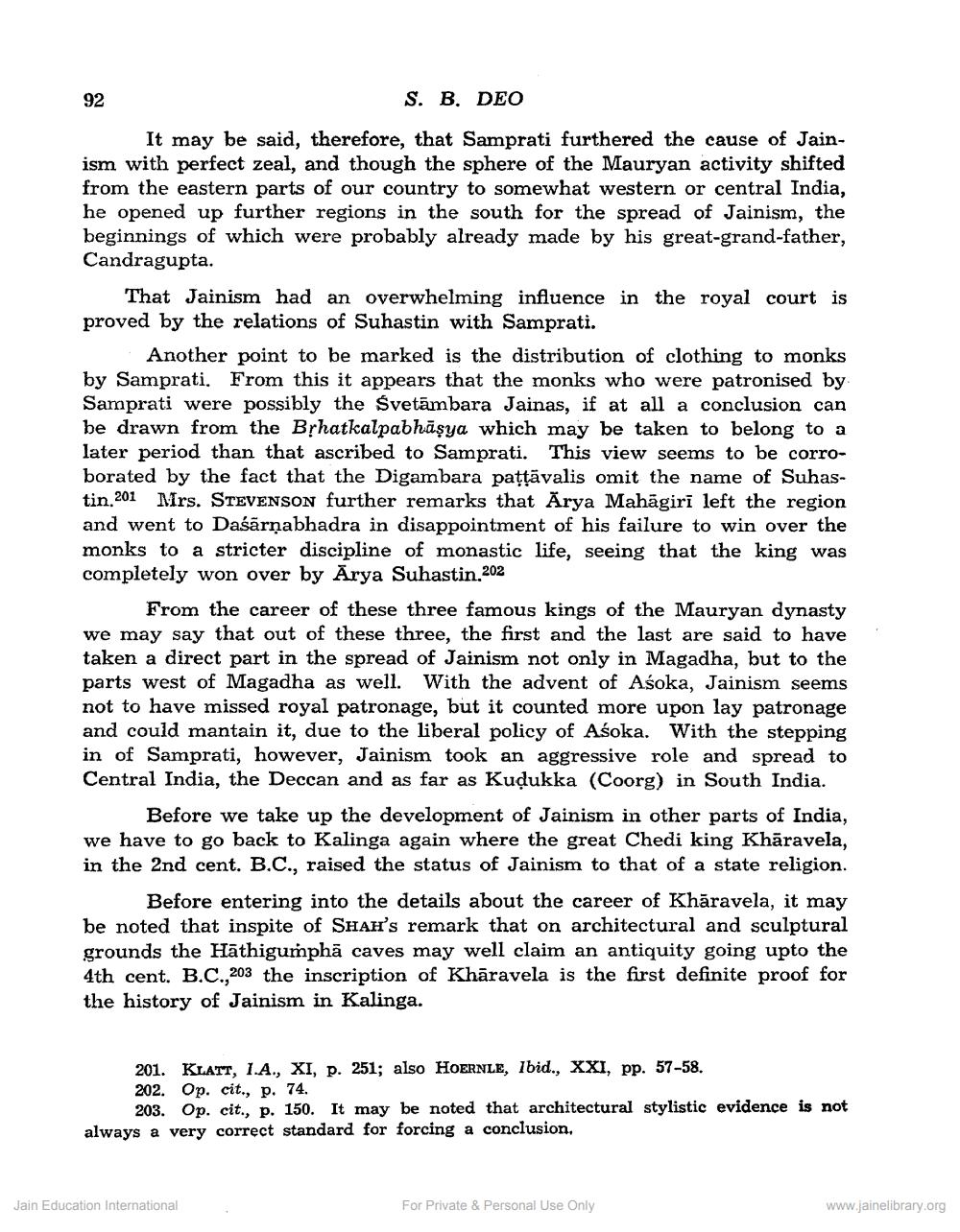________________
92
S. B. DEO
It may be said, therefore, that Samprati furthered the cause of Jainism with perfect zeal, and though the sphere of the Mauryan activity shifted from the eastern parts of our country to somewhat western or central India, he opened up further regions in the south for the spread of Jainism, the beginnings of which were probably already made by his great-grand-father, Candragupta.
That Jainism had an overwhelming influence in the royal court is proved by the relations of Suhastin with Samprati.
Another point to be marked is the distribution of clothing to monks by Samprati. From this it appears that the monks who were patronised by Samprati were possibly the Svetāmbara Jainas, if at all a conclusion can be drawn from the BỊhatkalpabhāşya which may be taken to belong to a later period than that ascribed to Samprati. This view seems to be corroborated by the fact that the Digambara pațțāvalis omit the name of Suhastin.201 Mrs. STEVENSON further remarks that Arya Mahāgiri left the region and went to Daśārņabhadra in disappointment of his failure to win over the monks to a stricter discipline of monastic life, seeing that the king was completely won over by Arya Suhastin.202
From the career of these three famous kings of the Mauryan dynasty we may say that out of these three, the first and the last are said to have taken a direct part in the spread of Jainism not only in Magadha, but to the parts west of Magadha as well. With the advent of Asoka, Jainism seems not to have missed royal patronage, but it counted more upon lay patronage and could mantain it, due to the liberal policy of Aśoka. With the stepping in of Samprati, however, Jainism took an aggressive role and spread to Central India, the Deccan and as far as Kudukka (Coorg) in South India.
Before we take up the development of Jainism in other parts of India, we have to go back to Kalinga again where the great Chedi king Khāravela, in the 2nd cent. B.C., raised the status of Jainism to that of a state religion.
Before entering into the details about the career of Khāravela, it may be noted that inspite of SHAH's remark that on architectural and sculptural grounds the Hāthigumphā caves may well claim an antiquity going upto the 4th cent. B.C.,203 the inscription of Khāravela is the first definite proof for the history of Jainism in Kalinga.
201. KLATT, 1.A., XI, p. 251; also HOERNLE, Ibid., XXI, pp. 57-58. 202. Op. cit., p. 74.
203. Op. cit., p. 150. It may be noted that architectural stylistic evidence is not always a very correct standard for forcing a conclusion,
Jain Education International
For Private & Personal Use Only
www.jainelibrary.org




